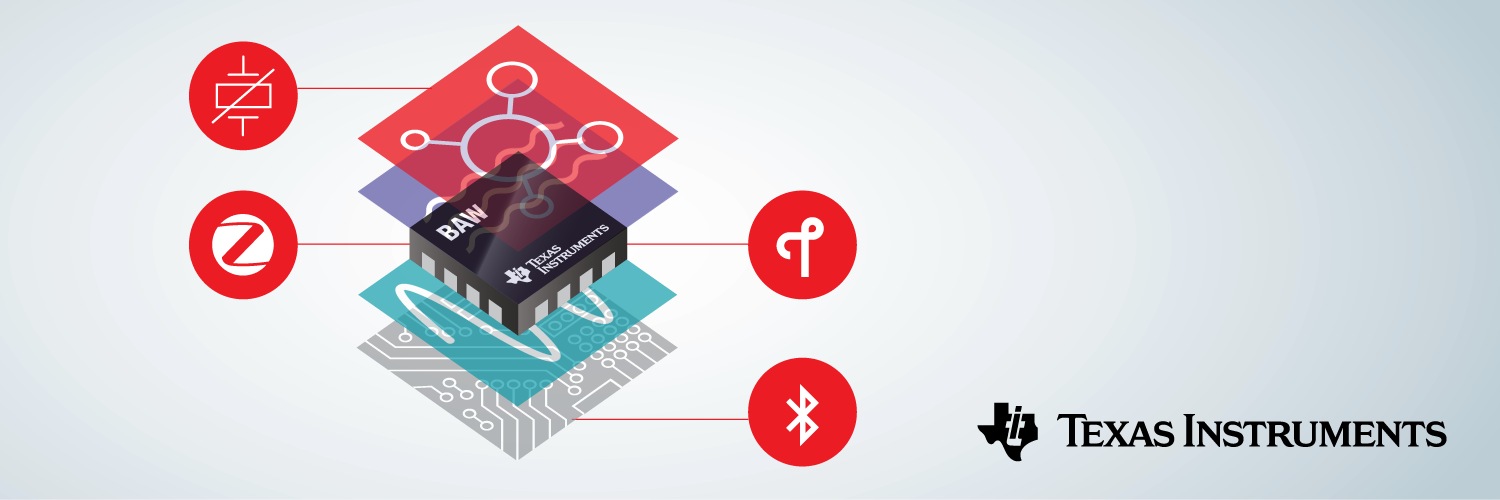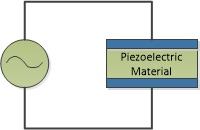SSZT528 february 2019 CC2652RB , LMK6C

Enterprise systems and communications equipment are the backbone of our rapidly evolving, connected world. As these technologies push the boundaries of speed, range and integration, developers and manufacturers are looking for solutions that offer a simplified approach to Internet of Things (IoT) design.
Innovative technology from Texas Instruments – bulk acoustic wave (BAW) resonators – takes integration a step further by offering the world’s first crystal-less SimpleLink™ wireless microcontrollers (MCUs) and the industry's first BAW oscillator. TI BAW resonator technology enables high-performance and highly accurate resonators. When the BAW is integrated into the MCU package, it eliminates the need for external quartz crystals without compromising power, latency or frequency stability. When the BAW is integrated into a oscillator package, it provides enhanced jitter performance and improved reliability in terms of vibration, shock, temperature stability, and mean time before failure.
Here are the top five things you need to know about TI BAW resonator technology:
1. What Is Bulk Acoustic Wave (BAW) Technology?
BAW is a micro-resonator technology that enables the integration of high-precision and ultra-low jitter clocks directly into packages that contain other circuits. BAW technology is less bulky than external quartz crystals – delivering cleaner wired and wireless signals over networks. It enables higher quality communications and more efficiency to a range of areas, from wireless consumer electronics to high-end industrial systems.
2. How Does TI BAW Technology Work?
TI BAW technology is the core enabler for integrated micro-electromechanical (MEMS)-based on-chip resonators that consist of a piezoelectric material sandwiched between two electrodes (Figure 1). This material can convert electrical energy to mechanical-acoustical energy, producing reliable oscillations that result in a high-frequency, stable clock output. The stable clock can then be used as a precision source for radio-frequency (RF) timing, enabling the radio core to operate reliably without compromising on parameters like frequency error and tight temperature tolerance.

(a)

(b)
Figure 1 Piezoelectric material serving as a resonator (a); TI BAW technology fabricated on silicon die (b).3. What Are the Benefits of TI BAW Technology?
TI BAW technology is supported by the world’s first crystal-less MCU and the industry's first BAW resonator, enabling reliable, high performance and high accuracy timing. With simplified designs built on the highly integrated wireless CC2652RB MCU and LMK6 BAW oscillator, TI BAW technology allows you to reduce the overall design footprint and development costs. Additionally, there are more design options and flexibility in a wider range of applications and environments.
4. How Can TI BAW Technology Improve Your Designs?
You can leverage innovative chips with TI BAW technology to shrink bill of materials (BOM) costs, improve network performance and increase immunity to vibration and shock in next-generation industrial and telecommunication applications, including data transfer, building and factory automation, and grid infrastructure equipment.
From farming to factories, you can take advantage of this technology to develop higher performing systems while minimizing system cost, size and design complexity.
5. How Can I Learn More and Get Started Developing with TI BAW Technology?
You can visit www.ti.com/baw and explore all of our new content related to TI BAW technology. Preproduction samples of the CC2652RB are now available through the TI store in a 7-mm-by-7-mm QFN package, and you can get started with the SimpleLink CC2652B wireless MCU-based TI LaunchPad™ development kit available through the TI store as well. Preproduction samples of certain frequency variants of the LMK6C are now available through the TI store. For other frequency variants and output formats, please reach out to your sales representative.
TI BAW technology-enabled CC2652RB devices are a part of the TI SimpleLink Platform with the broadest portfolio of wired and wireless Arm® MCUs (System-on-Chip) in a single software development environment – the SimpleLink SDK. The pre-production CC2652RB devices currently support Bluetooth Low Energy 5.0, and future releases are planned to include Zigbee 3.0 and Thread support as well. BAW resonators are also used in TI’s DPLL portfolio as high-performance voltage-controlled oscillators.
For more information on TI BAW technology:
- Read the application note, "Standalone BAW Oscillators Advantages Over Quartz Oscillators".
- Check out our whitepaper, "SimpleLink™ crystal-less wireless MCU based on TI BAW technology— at the heart of IoT evolution".
- Are you ready for BAW? Find out in this short technical article.